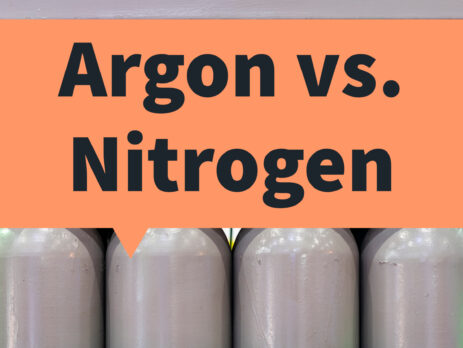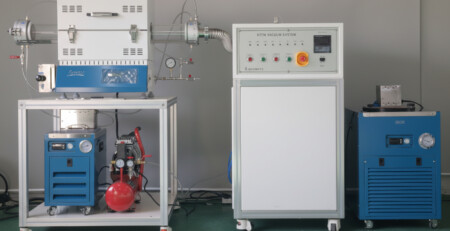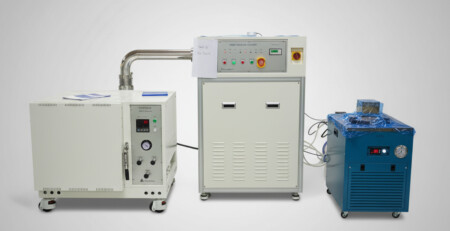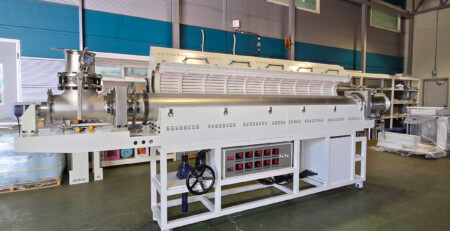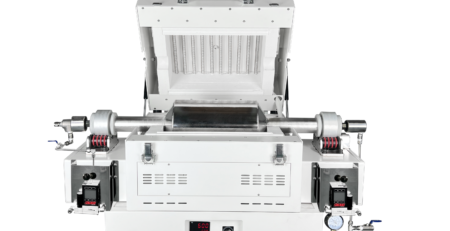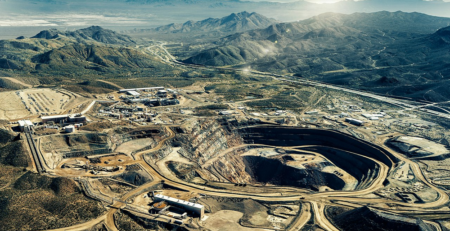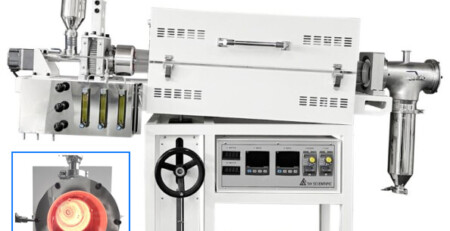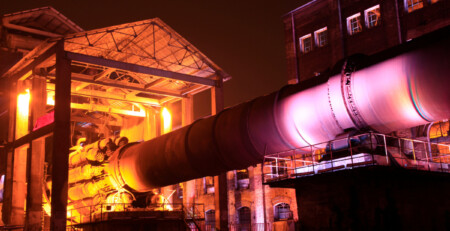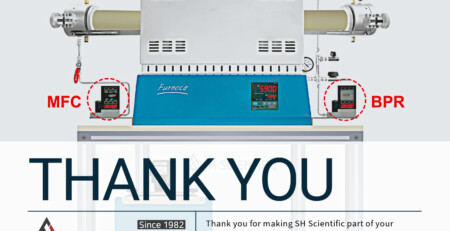Argon vs. nitrogen in vacuum furnace applications
Argon and nitrogen are the most widely used inert gases in vacuum furnaces, but they’re far from interchangeable.
Your choice has significant implications for end-product quality, operational costs, convenience, and even safety protocols.
What exactly is the role of inert-gas saturation, and what are the trade-offs between an argon chamber versus a nitrogen chamber?
Nitrogen is decidedly cheaper, but both nitrogen and argon are widely used.
Each can yield better results with certain materials and heating protocols, so this remains an area of active research.
Availability & cost
While nitrogen isn’t a noble gas, it generally behaves like one, making it a cost-effective alternative to argon.
In fact, nitrogen is about 87 times more abundant, comprising 78.1% of Earth’s atmosphere versus argon’s 0.9%. Consequently, nitrogen vacuum furnace protocols are cheaper to run—assuming, of course, its cooling behavior suits your sample.
Sample protection properties
Both gases protect against undesired reactions like oxidation, but their cost-effectiveness depends on gas flow (or lack thereof).
Argon’s higher density helps it to statically “blanket” samples. The overall volume of gas is modest, so argon’s effectiveness usually justifies its cost.
However, continuous flushing is another story. Blanketing behavior isn’t as helpful, but cost is a major factor, so nitrogen is often preferable.
Safety & ventilation
Nitrogen and argon both require ventilation to prevent the risk of asphyxiation. Neither gas is toxic, but each can displace oxygen.
Argon is denser than air. It tends to “pool” in lower areas, leaving a layer of breathable air above.
Nitrogen is similar in density to air, so it more easily mixes with and displaces air. All else being equal, static nitrogen poses a greater hazard than the same volume of argon.
Needless to say, good ventilation is a core safety measure for all labs at all times. But, if circumstances impede ventilation for any reason, then argon vacuum furnaces are theoretically less of a concern.
Cooling properties
Finally, samples cool more slowly in argon. It’s denser than nitrogen and therefore a poorer conductor of heat. Whether that’s a pro or con depends on the sample.
What’s more, gas density is just one factor. A tube furnace’s hot zones (and even sliding chamber) also give direct control over the cooling phase.
A subtler difference is how nitrogen versus argon cooling affects hardness, yield, and tensile strength. In 2018, Industrial Heating published tests on five different nickel–chromium alloys
- Inco X-750
- CRES 321
- Inco 625
- Inco 718
- Hasteloy X
Ten samples of each were annealed for 30–60 minutes at 1800° F (982° C) (or 1975° F (1079° C) in the case of Hastelroy X). Of those ten, five were cooled in argon and the other five were cooled in nitrogen. The protocols were identical in all other respects.
Inco X-750 and 718 exhibited much less hardness after nitrogen cooling. For X-750, nitrogen cooling also reduced yield and tensile strength while increasing ductility. Hasteloy X became slightly harder after nitrogen cooling. Otherwise, differences were small or nonexistent.
In brief, variations of similar materials can behave differently when cooled in different gases (and therefore at different rates).
Why do vacuum furnaces need inert gases?
Metals are prone to reacting with oxygen, a tendency which only increases at high temperatures. Non-reactive atmospheres (principally nitrogen or argon inert gases) minimize oxidation risk and also affect cooling.
Reactivity increases with temperature, so vacuum creation and/or inert gas saturation usually precedes the heating phase. Otherwise, the sample may start to degrade even before the actual thermal treatment begins.
Once the furnace has reached its operating temperature, the sample undergoes structural changes at a molecular level (e.g., annealing or calcination). At this point, an argon or nitrogen inert gas atmosphere prevents unwanted chemical reactions that would otherwise disrupt the desired changes.
Finally, inert gases affect the timing of the cooling phase. Their densities vary, and so too does the rate at which they disperse heat.
Isn’t a vacuum enough on its own?
A perfect vacuum does solve the problem of oxidation, but it’s not without challenges of its own.
For certain samples, a combination of vacuum and inert gas conditions is more practical than a higher vacuum alone.
Wear & tear
Like all mechanical devices, high vacuum pumps are prone to wear and tear. The longer they run, and the higher the vacuum they sustain, the more maintenance you should anticipate.
Outgassing
Gases are sequestered within certain materials. At standard temperature and pressure, they tend to remain in place. But under vacuum conditions—especially the high vacuum that delicate metals require—they may be released.
This process, known as outgassing, may contaminate the sample and even leave residues in the chamber.
Thermodynamic challenges
By definition, a vacuum has vanishingly few ambient particles. That limits conductive and convective cooling, making the sample’s temperature more difficult to control.
Material-specific issues
Finally, certain materials have their own behavioral quirks under vacuum conditions. For instance, cold welding may occur between some similar metals, while others are prone to sublimation.
Inert gas management in SH Scientific vacuum furnaces
With vacuum furnaces, atmospheric control is a close second in priority to thermal precision.
We’ve channeled years of feedback and internal testing into a simple yet precise inert gas management system.
That’s why every SH Scientific vacuum furnace is available in a turn-key package with:
- A digital mass flow controller, pre-programmed for nitrogen, argon, and nearly 100 other inert gases.
- A low-noise high vacuum pump.
- An energy-efficient recirculating chiller to extend seal life.
- Several chamber size, material, and hot zone options.
Our Korea-built furnaces are trusted by familiar names in education, public agencies, and private-sector research.
And with end-to-end control of the manufacturing process, we can accommodate virtually any custom specs your lab requires.
To learn more or to discuss technical details, please contact our US sales office today.

